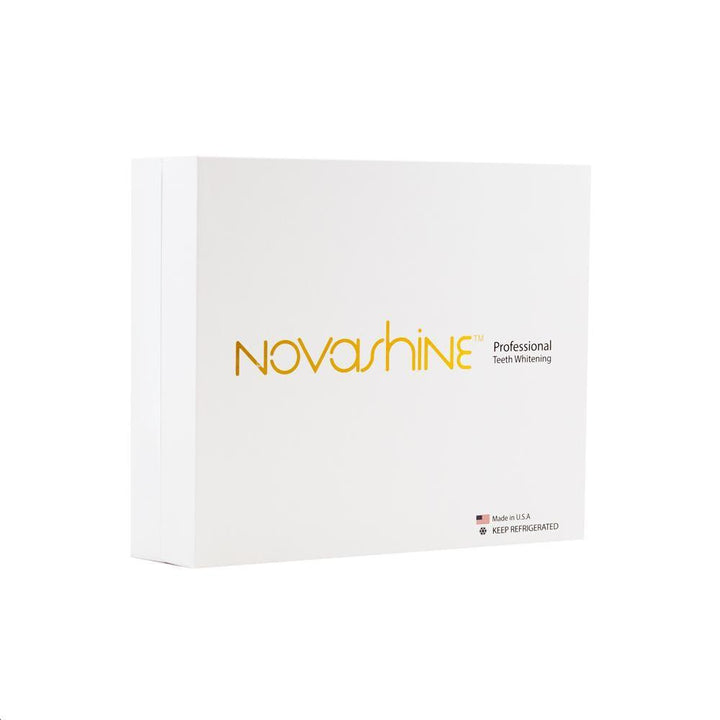Introduction
Your smile is often your most radiant accessory, but sometimes, despite our best efforts, it can lose its luster. Tooth discoloration, a common concern for many, can cast a shadow on our confidence and self-esteem. In our upcoming post, we'll embark on a journey to explore the various facets of tooth discoloration, unraveling its causes, preventive strategies, and the preventative power of LED Teeth Whitening. Join us as we demystify the world of dental stains and guide you toward a brighter, more confident smile.
Causes of Tooth Discoloration

Tooth Discoloration can be caused by many factors, both internal and external. The different causes of discoloration can show up as different colors on your teeth or cause staining. We'll delve deeper into this.
Food & Beverages
One of the most prevalent causes of tooth staining and discoloration is the consumption of certain foods and beverages. Coffee and tea, two popular choices, contain compounds that can adhere to tooth enamel, resulting in stains over time. Red wine, with its tannins, is also notorious for leaving dark marks on teeth. Additionally, foods that are high in sugar and acidity can erode enamel, making teeth more susceptible to staining.
Tobacco Use
Tobacco products, including smoking and chewing, introduce tar and nicotine to the mouth. These substances are notorious for causing unsightly stains on teeth, which can be challenging to remove.
Poor Oral Hygiene
Neglecting regular oral hygiene practices, such as brushing and flossing, can lead to the accumulation of plaque on teeth. Over time, this can develop into stubborn stains that diminish the brightness of your smile.
Aging
As we age, natural changes in our teeth can contribute to discoloration. Tooth enamel naturally thins with age, revealing the yellowish dentin layer beneath, which can give the appearance of discoloration.
Medications
Certain medications can also cause teeth to darken or stain as a side effect. Antibiotics and antihypertensive drugs are among the medications known for this effect.
Trauma
Trauma or injury to the teeth can disrupt enamel, making teeth more susceptible to staining. These physical impacts can lead to changes in the color and appearance of teeth.
Dental Products
Dental materials, including amalgam fillings, can cause surrounding teeth to appear discolored, further contributing to staining and discoloration. Understanding these causes can help you take proactive measures to prevent tooth staining and maintain a bright, healthy smile.
Preventative Strategies

Preventing tooth discoloration is not only about maintaining a beautiful smile but also safeguarding your oral health. While not all causes of tooth discoloration can be avoided, a few key preventative strategies can make all the difference.
Maintain a Diligent Oral Hygiene Routine
- Brushing: Regularly brush your teeth at least twice a day, using fluoride toothpaste. This helps remove surface stains and prevent the buildup of plaque, which can lead to discoloration.
- Flossing: Don't forget to floss daily to remove food particles and plaque from between your teeth and along the gumline. Neglecting these areas can contribute to staining.
Mindful Consumption of Stain-Causing Substances
- Moderation: Limit the consumption of known stain-causing substances, such as coffee, tea, red wine, and tobacco. Consuming them in moderation can reduce their impact on tooth discoloration.
- Rinse After Consumption: After consuming these substances, rinse your mouth with water to help wash away potential staining particles.
Stay Hydrated with Water
- Drinking water throughout the day helps maintain a healthy saliva flow. Saliva acts as a natural cleanser for your mouth and can assist in rinsing away stain-causing substances.
Maintain a Balanced Diet
- Consume foods rich in calcium and other minerals that promote strong tooth enamel. A healthy enamel layer is more resistant to staining.
- Include fibrous fruits and vegetables, which can help scrub away surface stains as you chew.
Regular Dental Check-Ups
- Visiting your dentist for regular check-ups is essential. Professional cleanings can remove stubborn stains and tartar that at-home brushing may miss.
- Dental professionals can also identify potential issues and offer personalized advice on maintaining a white, healthy smile.
By incorporating these preventative strategies into your daily routine, you can proactively protect your teeth from discoloration and maintain a radiant, confident smile.
The Role of LED Teeth-Whitening

At-home LED teeth whitening has emerged as a convenient and effective solution for combating tooth discoloration and staining. This innovative approach leverages the power of blue LED light in conjunction with specialized whitening gels. The LED light accelerates the breakdown of stains and discoloration, making it an efficient and quick method for achieving a brighter smile.
Novashine's #1 best-selling teeth whitening kit is a game-changer when it comes to tackling tooth discoloration and staining. This cutting-edge solution harnesses the power of blue LED light in tandem with specially formulated whitening gels, which work together to expedite the breakdown of stains and discoloration. With consistent use of Novashine's teeth whitening kit, you can gradually bid farewell to the effects of staining caused by daily culprits like coffee, tea, and certain foods. What sets this kit apart is its ability to enhance the aesthetic appeal of your smile without the discomfort of sensitivity often associated with traditional whitening methods. For a convenient and accessible option to restore your teeth to their natural brilliance, discover Novashine's teeth whitening kit here:
Novashine LED Teeth Whitening Kit

$59.99
$68.99
Experience the joy and confidence brighter and whiter teeth bring with Novashine’s top rated LED Teeth Whitening Kit Novashine’s much-buzzed-about LED Teeth Whitening Kit comes with all the products you need to achieve a brighter and whiter smile right from the… read more
Sources:
https://www.webmd.com/oral-health/tooth-discoloration
https://www.colgate.com.au/oral-health/teeth-whitening/how-does-led-teeth-whitening-work














